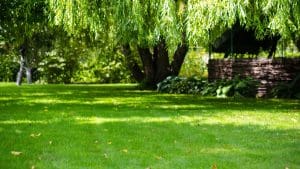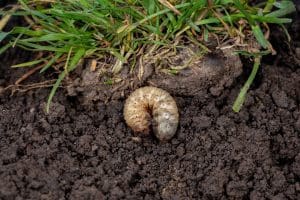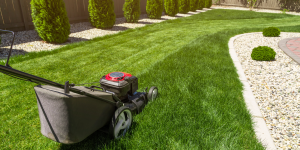
March is here, and spring is just around the corner! Every smart homeowner knows that a lush, healthy lawn doesn’t happen by chance—it’s the result of careful planning and early action. The key to a greener, thriving lawn this season starts now, and one of the best steps you can take is securing your spot on our schedule, go ahead and do that HERE. But beyond that, there are simple, effective ways to ensure your lawn is the envy of the neighborhood. Let’s dive into the essential steps you can take today to set your yard up for success and create a lawn worth admiring all season long.
What Does It Take to Set Your Lawn Up For Success This Spring?
- Clean Up Debris – Remove leaves, sticks, and any leftover winter mess.
- Inspect for Lawn Damage & Pests – Look for snow mold, dead patches, or areas that need attention.
- Mowing Your Lawn – The Right Way – A clean cut prevents stress on the grass when mowing season starts.
- Get Pricing and Get on Our Schedule
Table of Contents

Spring Lawn Cleanup
The First Step to a Healthier Yard
As winter fades, your lawn needs a fresh start before it can thrive in the spring. Removing debris not only improves curb appeal but also prevents disease, mold, and pest infestations. A layer of leaves, sticks, and leftover thatch can trap moisture, creating the perfect environment for fungal growth and unwanted pests. Clearing out these materials early ensures your grass gets the air, sunlight, and nutrients it needs to green up properly.
How to properly clean up your lawn for a strong, healthy start?
- Rake Up Leaves & Thatch – Even if you raked in the fall, some debris may have built up over the winter. A light raking prevents mold and helps break up compacted soil.
- Remove Sticks & Branches – Heavy debris can block new grass growth and get in the way of mowing and fertilizing.
- Check for Snow Mold or Dead Patches – If you notice matted-down areas with gray or pinkish mold, gently rake them to increase airflow and prevent spreading.
- Clear Out Mulch Beds & Edges – Leaves and debris often pile up along sidewalks, garden beds, and fences. Removing them gives your lawn a crisp, clean look.
A little cleanup now makes a big difference when it comes to healthy, vibrant grass later in the season!

Inspecting for Lawn Damage & Pests
Catch Problems Early
Winter can be tough on your lawn, and early spring is the perfect time to assess any damage and check for signs of pests. Snow, ice, and cold temperatures can leave behind dead patches, mold, and compacted soil, while overwintering pests may start to emerge as temperatures rise. Identifying and addressing these issues early helps prevent bigger problems later in the season, ensuring your lawn gets off to a strong, healthy start.
Here’s what to look for when inspecting your lawn:
- Snow Mold – If you notice gray or pink patches of matted-down grass, this is likely snow mold. Gently rake these areas to improve airflow and help the grass recover.
- Dead or Thinning Patches – Some areas may have suffered from winter stress or salt damage. Mark these spots for seeding or fertilization once soil temperatures warm up.
- Pest Activity – Keep an eye out for grubs, moles, or vole damage. Small tunnels, raised ridges, or areas where grass peels up easily may indicate an issue. A preventative approach now can stop these pests from causing more damage.
- Soil Compaction & Drainage Issues – If water pools in certain areas or the ground feels rock-hard, your soil may be compacted. While aeration is best done in the fall, noting these problem areas can help you adjust your lawn care routine.
What does Greener Grass do to help you control the pests in your yard? Find out more HERE.

Mowing Your Lawn – The Right Way

Get Pricing and Get on Our Schedule
We’ve seen it all, and we know exactly what it takes to create the perfect lawn. The final step to a greener, healthier yard starts with us. Did you know you can get your pricing in just minutes? Start HERE and find out! No waiting, no hassle—just a straightforward way to get started. Lock in your spot today and set your lawn up for success this season!
Still wanting to learn more? You Can Read More HERE
